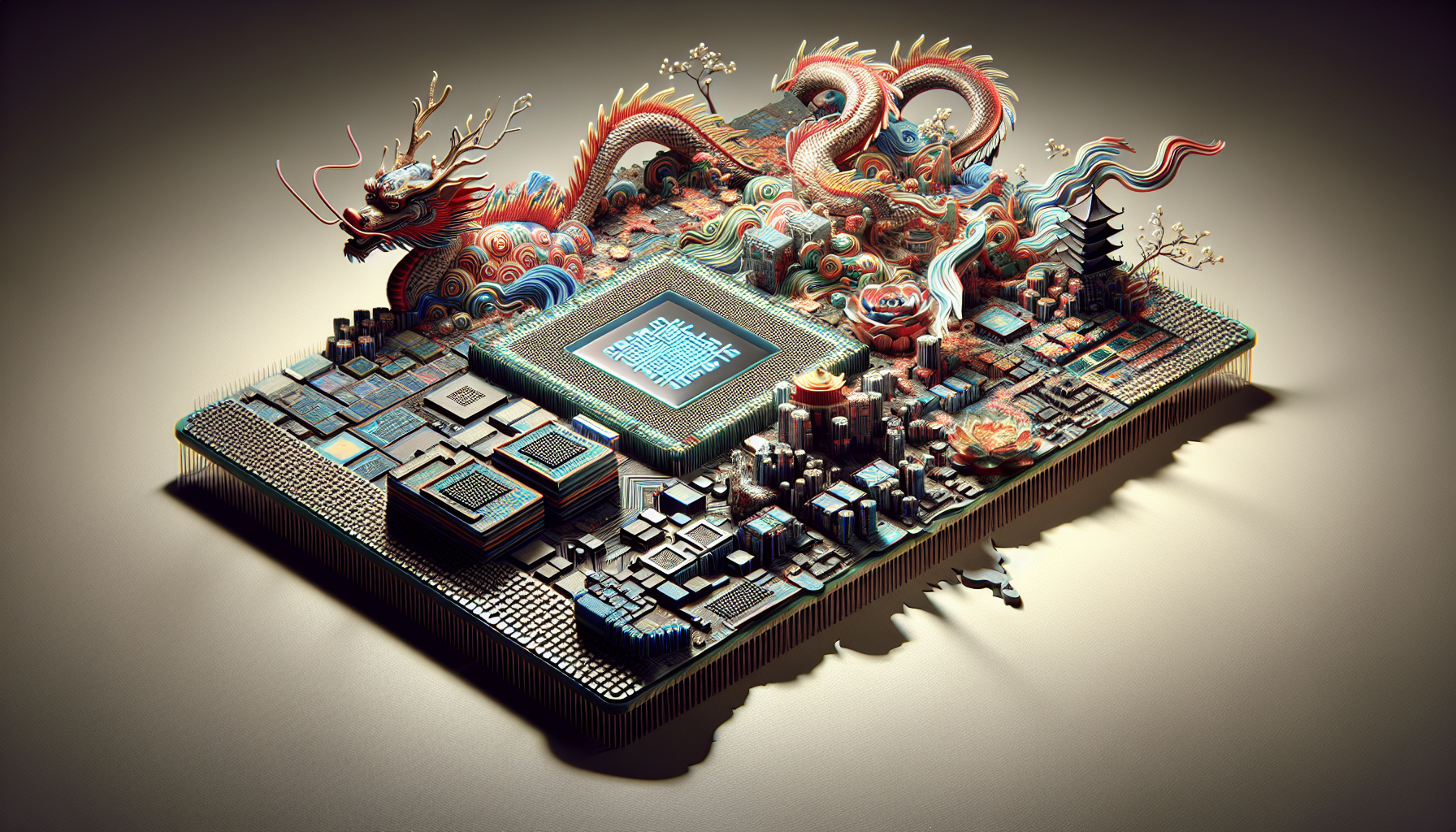China’s Innovation in Silicon-Free Transistors May Transform Microprocessor Technology
Introduction: A New Chapter in Chip Advancement
In an era increasingly dominated by computational efficiency, China appears to have positioned itself as a leader in microprocessor advancements. Researchers at Peking University have revealed a revolutionary transistor that substitutes conventional silicon with a two-dimensional compound called bismuth oxyselenide. This innovation carries significant implications—promising faster, energy-efficient chips and heralding a new era for silicon-free electronic devices.
Understanding Bismuth Oxyselenide and Its Significance
A Remarkable Two-Dimensional Material
Bismuth oxyselenide (Bi₂O₂Se) is a layered, two-dimensional compound that showcases exceptional electrical characteristics. In contrast to conventional silicon, which is fairly thick and inflexible, bismuth oxyselenide is extremely thin and adaptable. This makes it exceptionally suitable for next-generation gadgets, particularly as devices decrease in size while requiring enhanced power efficiency.
A primary benefit of bismuth oxyselenide is its elevated carrier mobility. This attribute allows electrons to traverse the material more swiftly than through silicon, leading to accelerated data processing. Moreover, the compound features a high dielectric constant, which bolsters its capacity to store and manage electrical energy.
Advantages Over Silicon
For decades, silicon has been the foundation of microprocessor manufacturing, yet it has its drawbacks. As chip manufacturers test the limits of Moore’s Law, the physical limitations of silicon are increasingly evident. Bismuth oxyselenide presents a feasible alternative, boasting performance improvements of up to 40% in processing velocity and a 10% decrease in energy usage compared to top-tier silicon chips from companies like Intel.
Innovative Transistor Design: The Gate-All-Around Architecture
Advancing Beyond Traditional Transistor Configurations
The researchers from China have also presented a new structural design for the transistor. Referred to as a “gate-all-around” (GAA) layout, this configuration surrounds the gate—the element that governs current flow—on all sides of the source, in contrast to conventional transistors which typically cover only three sides.
This comprehensive gate architecture enhances electrostatic control, thereby diminishing current leakage and energy loss. The outcome is improved efficacy and stability, paving the path for future chips that are not only more rapid but also cooler and more energy-efficient.
Implications for Global Semiconductor Rivalry
China’s Quest for Chip Self-Sufficiency
The arrival of a functional silicon-free transistor is timely for China. In the context of escalating trade disputes and stringent U.S. export regulations on advanced semiconductors, China has been investigating methods to strengthen its domestic chip production capacities. This breakthrough could significantly lessen the country’s dependence on foreign chip technology, altering the dynamics in the global semiconductor arena.
A Step Towards Technological Autonomy
By spearheading a novel material and transistor configuration, China could soon be positioned to manufacture state-of-the-art chips independently. This development not only has economic and national security ramifications but also establishes the nation as a frontrunner in semiconductor research and development.
Possible Applications Across Various Industries
Consumer Electronics and More
The advantages of bismuth oxyselenide-based transistors could reach far beyond smartphones and laptops. Sectors such as artificial intelligence, self-driving cars, and advanced robotics could witness substantial performance enhancements.
Even common devices like headphones or earbuds and Bluetooth speakers may benefit from improved battery longevity and processing speed. As chip efficiency increases, the power demands of portable electronics can be significantly minimized, resulting in extended usage periods and enhanced performance for users.
Compatibility with Existing Technologies
While the new transistor design represents a substantial shift from silicon-based systems, it is anticipated to align well with contemporary semiconductor manufacturing techniques. This suggests that transitioning to bismuth oxyselenide-based chips might not necessitate a comprehensive revamp of existing production lines, making the changeover more attainable for manufacturers.
Conclusion
China’s creation of a silicon-free transistor utilizing bismuth oxyselenide transcends mere scientific achievement—it’s a strategic shift that could reshape the future of microprocessor technology. With exceptional electrical attributes, energy efficiency, and an innovative structural design, this advancement may serve as the cornerstone for the next generation of computing. As the global race for chip leadership escalates, this breakthrough positions China as a significant player in the changing semiconductor landscape.
Frequently Asked Questions (FAQ)
What is bismuth oxyselenide?
Bismuth oxyselenide (Bi₂O₂Se) is a two-dimensional compound celebrated for its high electron mobility and strong dielectric characteristics. It’s thinner and more flexible than silicon, making it suitable for advanced electronic applications.
How does the new transistor design differ from traditional ones?
The new design features a “gate-all-around” architecture that encloses the gate on all sides of the source. This enhances current control and minimizes energy loss, unlike typical designs that only cover three sides.
How much faster are these new chips compared to traditional silicon chips?
Researchers indicate that chips employing the newly developed silicon-free transistors can function up to 40% quicker than leading silicon-based chips while consuming 10% less energy.
Why is this development significant for China?
With rising restrictions on U.S.-manufactured chips, China is pursuing technological independence in the semiconductor market. This breakthrough could help decrease its dependency on foreign technologies and enhance its domestic capabilities.
Will this technology affect consumer electronics?
Yes, devices like headphones or earbuds, Bluetooth speakers, and smartphones may see substantial benefits from decreased power consumption and increased speed provided by these advanced chips.
Can current manufacturing facilities adapt to this new technology?
Initial indications suggest that the new transistor design could be compatible with existing semiconductor manufacturing methods, facilitating broader adoption.
Are Apple AirPods affected by chip advancements like this?
While not explicitly stated, advancements in chip technology could ultimately influence products like Apple AirPods, potentially enhancing battery life, connectivity, and overall performance.